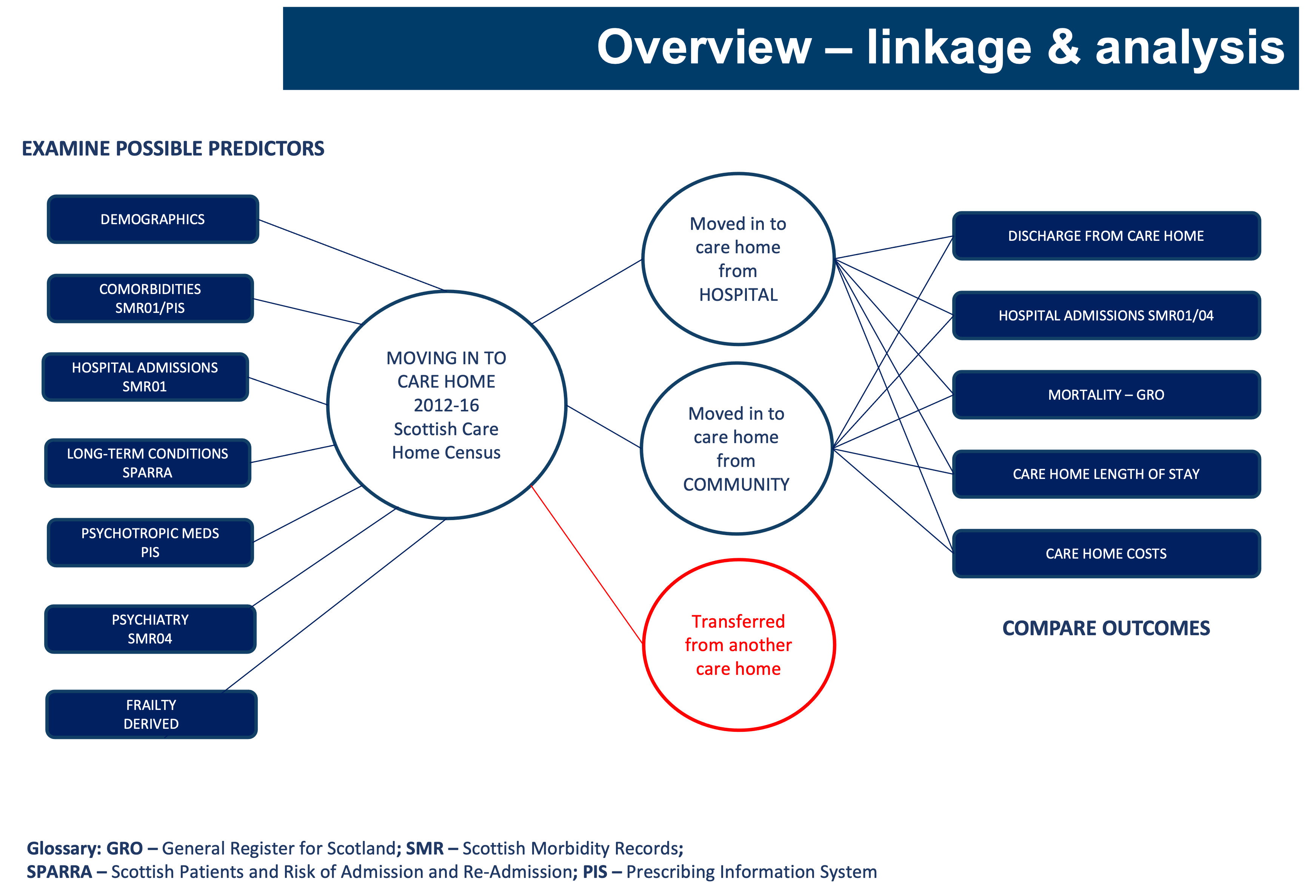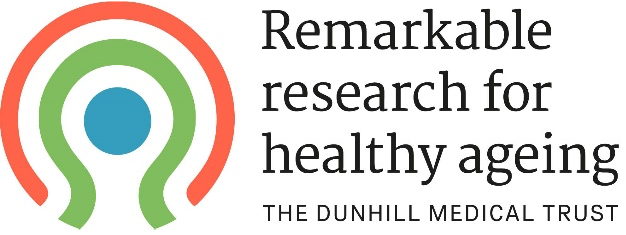UnPiCD: Understanding Pathways into Care Homes Using Data
The UnPiCD study continues the work initially started during my PhD Project 4. It has been generously funded by the Dunhill Medical Trust, the Scottish Informatics and Linkage Collaboration and the Chief Scientist Office.
This study uses the Scottish Care Home Census (SCHC) data linked to hospital admissions, psychiatry, prescribing and long-term conditions data to provide the first large-scale analysis of pathways into care homes in Scotland. It is being undertaken as part of my Postdoctoral Clinical Lectureship, supported by the Chief Scientists Office of Scotland. A full abstract of the Lectureship programme is available from here.
This work will compare those moving-in after a hospital admission to those moving-in directly from the community considering predictors, outcomes, costs and exploring geographical variation.
The project has been designed to enhance the valuable data resource of the SCHC through data linkage to explore an important lived experience for individuals, their families and care providers. It is anticipated that the work will yield important methodological findings, to inform future data collection, in addition to providing implications for practice, policy and research.
The data were submitted by care homes as part of the annual Scottish Care Home Census (SCHC), collected by the Care Inspectorate and Scottish Government, analysed by Public Health Scotland (formerly ISD).
An anonymised linked dataset has already been created based on the SCHC cohort including: care home admission between 2013 and 2016 and previous hospital admissions, long-term conditions and psychoactive medication use for three years prior to moving into the care home. There are additional data on hospital admission and mortality after care home admission. From this linked dataset, three groups will be defined: (i) Those moving into a care home from hospital who lived in the community before hospital admission; (ii) Those moving into a care home directly from the community (own home/sheltered/supported accommodation) ; (iii) Those moving into a care home from another care home (transfers between care homes – this group will be excluded from analyses, as the focus is new admissions). The detailed study objectives are presented below:
Objective 1: We will describe the groups’ clinical and demographic features. Additional variables will be derived to help determine previous hospitalisations, psychoactive medication use, multimorbidity etc. We will describe univariate associations and create multivariate models of the predictors of care home admission from hospital and from the community. This will allow comparison between Scottish data and reports from other healthcare settings identified in our systematic reviews.. We have published the results of this work in an open access publication in the journal Age & Ageing.
Objective 2: We will compare outcomes for both groups, in terms of care home discharge, length of Care home stay, hospitalisation after care home admission and mortality after care home admission. This will be achieved by estimating differences between groups in terms of the outcomes using a regression-based framework, for example time-to-event analysis. These outcomes are important to inform capacity and service planning. Comparing the outcomes of the groups will help in supporting, or refuting, whether the two populations (those admitted from the community or from hospital) are similar.
Objective 3: Costs will be modelled for the two groups until care home discharge, death or end of follow-up. Costs for hospital inpatient stays will be assigned using per diem costs from the Scottish Health Service Costs (‘Cost Book’ (R040)). These will be mapped to Health Board area and specialty and multiplied by length of hospital stay. Unit costs per prescription will be assigned to prescribed items using British National Formulary codes. Average weekly care home charges will be expressed as daily charges and multiplied by length of residency.
Objective 4: Data are available at Health Board and Integration Authority Level. Funding decisions may involve Integration (formerly Local) Authority level allocations. Thus, the results can be compared to establish if there are variations in the patterns of care home admissions across regions. These will be case-mix adjusted for the nationally available demographic distributions, including age, sex and area-based deprivation. We will describe any potential bias in the analysis, due to missing care home data, considering multiple imputation analysis if this is appropriate.
A pictorial summary of the linkage methods is presented below:

We are making progress on data analysis and look forward to having further results to share shortly, with updates posted here.



